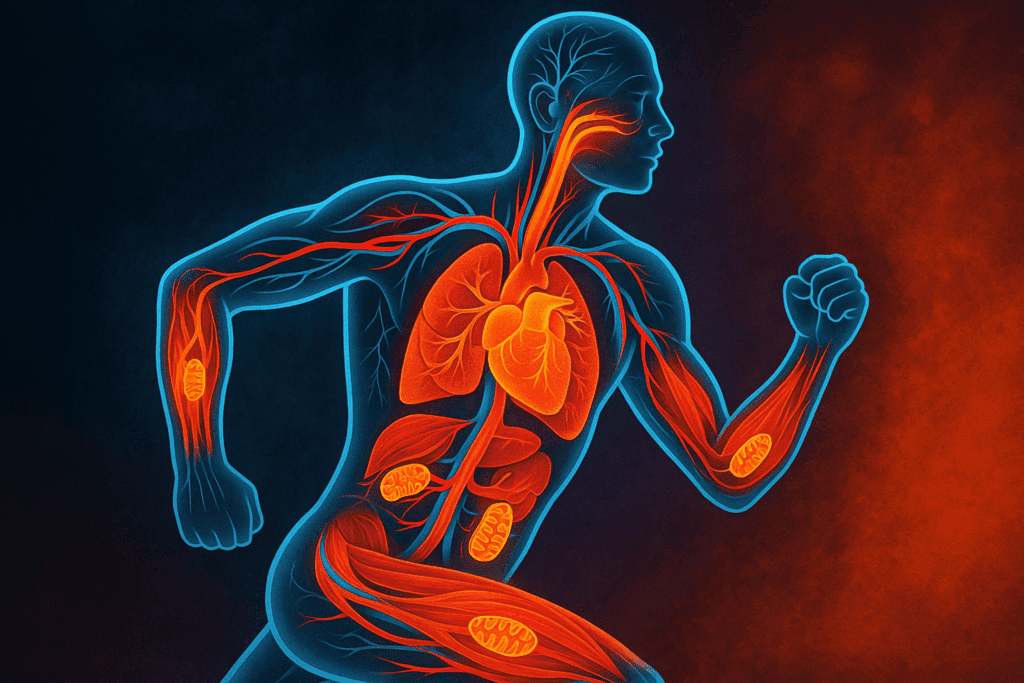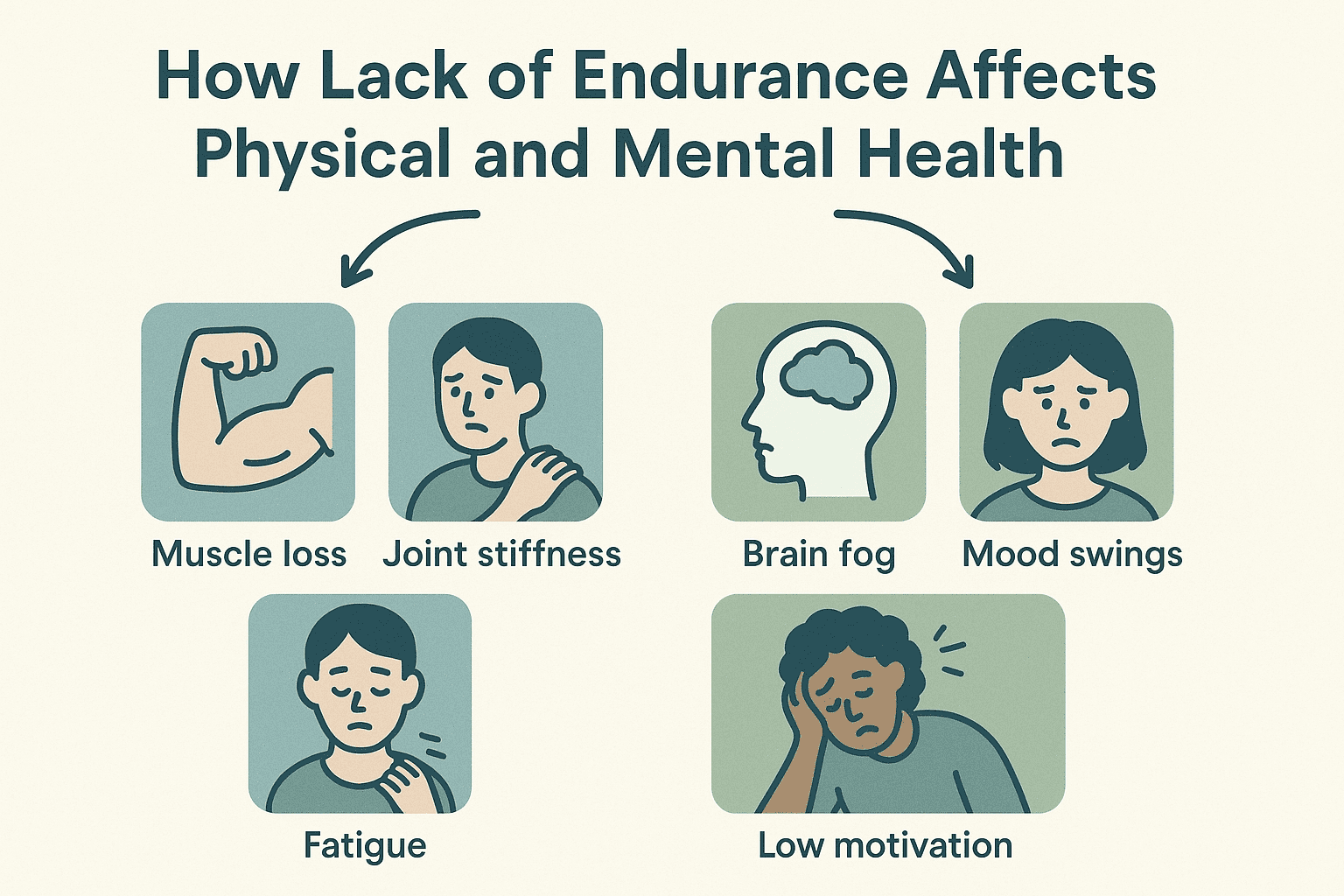Stamina is a term frequently used in conversations about fitness, athletic performance, and overall health, but it often remains misunderstood or oversimplified. To truly grasp what stamina means in the human body, it’s essential to move beyond surface-level definitions and explore the physiological, psychological, and lifestyle elements that contribute to it. When people ask, “what is stamina?” they’re often referring to the ability to sustain physical or mental effort over extended periods. However, stamina encompasses much more—it is a comprehensive reflection of endurance, resilience, energy metabolism, and even mental fortitude.
In its most practical sense, stamina is the capacity to maintain consistent performance without premature fatigue. For athletes, this might mean running a marathon without slowing down. For someone recovering from illness, it might mean walking a few blocks without needing to rest. Whether you’re training for a competition or simply hoping to get through your daily routine with greater ease, understanding what is stamina in the human body can be the key to unlocking your potential. This article will delve into the deeper meaning of stamina, explore the causes of low stamina and low endurance, and provide evidence-based strategies to improve and maintain lasting strength naturally.
You may also like: Build Running Stamina Fast: Best Exercises to Increase Endurance and Boost Performance Naturally

High Stamina Meaning: Beyond Energy and Willpower
To begin unraveling the high stamina meaning, it helps to think of stamina as the bridge between strength and endurance. While strength is the ability to exert force, and endurance is the ability to sustain activity over time, stamina brings both into balance. High stamina doesn’t just mean having energy—it means having the physical and mental capacity to push through challenges while maintaining performance quality. Individuals with high stamina often exhibit enhanced cardiovascular function, muscular efficiency, and optimal energy utilization.
The high stamina meaning also encompasses adaptability. A person with well-developed stamina can recover more quickly between bouts of activity, resist fatigue during long tasks, and maintain cognitive clarity even under stress. This adaptability stems from a combination of biological and behavioral factors, including mitochondrial health, blood oxygenation, and a mindset rooted in perseverance. Understanding this deeper interpretation allows us to see why stamina plays a pivotal role not just in sports, but in every aspect of life—from work productivity to emotional resilience.
Understanding What Is Stamina in Human Body Function
Biologically speaking, stamina is driven by the efficiency of the cardiovascular and respiratory systems, muscular endurance, and energy metabolism. When the body performs a task—whether lifting weights or climbing stairs—it draws on both aerobic and anaerobic energy pathways. High stamina reflects the body’s ability to switch between these systems efficiently, delivering oxygen and nutrients to muscles while clearing out fatigue-inducing byproducts like lactic acid.
On a cellular level, mitochondria—the energy-producing organelles—play a vital role. Healthy, abundant mitochondria support high stamina by ensuring a steady supply of adenosine triphosphate (ATP), the molecule that powers all cellular activity. A decline in mitochondrial function, often linked to aging, poor diet, and inactivity, is one reason why some individuals experience low stamina even in the absence of obvious health problems.
Moreover, stamina in the human body is influenced by hormonal balance, particularly levels of cortisol, adrenaline, and thyroid hormones. These regulate energy release, motivation, and recovery. A well-functioning endocrine system can enhance stamina by optimizing the body’s stress response and maintaining energy equilibrium. Recognizing these physiological underpinnings is critical to answering the question, “what is stamina in human body systems?”

Identifying the Root Causes of Low Stamina and Low Endurance
When individuals struggle with persistent fatigue or find themselves tiring easily during simple tasks, they may be dealing with low stamina or low endurance. While the terms are often used interchangeably, low stamina typically refers to the inability to sustain peak performance over time, while low endurance suggests a broader struggle with maintaining activity at any level.
One of the most common causes of low stamina is poor cardiovascular health. When the heart cannot pump blood efficiently, muscles receive less oxygen, leading to quicker fatigue. Similarly, respiratory inefficiencies can hinder stamina by limiting oxygen uptake and delivery. Lifestyle factors such as a sedentary routine, poor sleep hygiene, inadequate hydration, and unbalanced nutrition can exacerbate these physiological issues.
Psychological factors also play a crucial role. Chronic stress, depression, and anxiety can sap energy and motivation, making it harder to engage in or recover from physical activity. In some cases, a lack of endurance may be symptomatic of an underlying medical condition such as anemia, hypothyroidism, or chronic fatigue syndrome. Therefore, it’s important not to dismiss low stamina as mere laziness or aging—it often signals deeper health imbalances that require attention.

How Lack of Endurance Affects Physical and Mental Health
The effects of a lack of endurance extend far beyond the inability to complete a workout. Physically, low endurance can lead to muscle atrophy, joint stiffness, and reduced metabolic efficiency. Over time, these issues can spiral into more serious health risks such as obesity, insulin resistance, and cardiovascular disease. Lack of endurance often results in a feedback loop where inactivity leads to deconditioning, which further reduces stamina and motivation to move.
Mentally, the impact is just as profound. Individuals who lack stamina may experience reduced concentration, impaired memory, and heightened emotional reactivity. This is partly due to reduced blood flow and oxygenation to the brain, but also because persistent fatigue wears down willpower and self-efficacy. The inability to engage in enjoyable or productive activities due to exhaustion can also contribute to feelings of isolation and low self-esteem.
For professionals juggling demanding schedules, parents managing household responsibilities, or students navigating academic stress, the lack of stamina can be a major roadblock to success and fulfillment. Recognizing the interconnectedness of physical and mental endurance is the first step toward building a more resilient and energized self.

Strategies for Overcoming Low Stamina Naturally
Reversing low stamina and rebuilding lasting strength is entirely possible with a holistic approach. One of the most effective strategies is adopting a structured exercise program that includes both aerobic and anaerobic elements. Activities such as walking, swimming, and cycling strengthen the cardiovascular system, while resistance training supports muscular endurance. The key is consistency—short, daily workouts often yield better stamina gains than sporadic intense sessions.
Nutrition is another cornerstone of natural stamina enhancement. Foods rich in complex carbohydrates, lean protein, healthy fats, and micronutrients such as iron, magnesium, and B vitamins support optimal energy production. Staying hydrated is equally important, as even mild dehydration can impair stamina and cognitive function. Incorporating adaptogenic herbs such as ashwagandha or rhodiola can also help modulate stress responses and support energy balance.
Rest and recovery are just as essential as activity. High-quality sleep allows the body to repair tissues, replenish neurotransmitters, and recalibrate hormonal rhythms. Sleep deprivation, on the other hand, contributes significantly to low stamina and emotional instability. Mindfulness practices like meditation, deep breathing, and yoga can enhance mental resilience and reduce the stress burden on the body, thereby improving stamina naturally.
Recognizing and Addressing a Lack of Stamina in Daily Life
It’s not uncommon for individuals to overlook the signs of low stamina, attributing their fatigue to busyness or age. However, learning to recognize when the body is underperforming can be the difference between temporary fatigue and chronic dysfunction. Regularly feeling winded after light activity, experiencing muscle soreness after minimal exertion, or struggling with basic mental tasks are all potential indicators of a lack of stamina.
Addressing these symptoms requires self-awareness and intentional lifestyle shifts. Rather than pushing through exhaustion, it’s important to assess patterns of rest, movement, and nutrition. Keeping a journal to track energy levels, sleep quality, and exercise habits can help identify triggers and progress. Consulting with healthcare professionals, including nutritionists and physical therapists, can provide tailored strategies for rebuilding endurance safely and sustainably.
Encouraging small, sustainable changes often proves more effective than attempting drastic overhauls. A 10-minute walk after meals, a commitment to drinking more water, or establishing a bedtime routine can each contribute to long-term improvements. As stamina increases, so does the capacity to handle life’s demands with grace and vigor.

Mental Endurance: The Overlooked Component of High Stamina
While physical stamina often takes center stage, mental endurance is an equally vital—yet often overlooked—component. The ability to focus, make decisions, and manage emotions under prolonged pressure is a form of stamina that supports not only productivity but overall well-being. For instance, students studying for final exams, professionals meeting tight deadlines, or caregivers navigating constant demands all rely heavily on mental resilience.
Cognitive stamina is underpinned by many of the same factors that support physical endurance. Adequate sleep, balanced nutrition, and regular exercise are foundational, but so are practices that enhance neuroplasticity and stress tolerance. Activities like journaling, learning new skills, or engaging in meaningful conversations can help build neural endurance. Likewise, avoiding multitasking and reducing digital distractions can help preserve mental energy for tasks that truly matter.
The interplay between physical and mental stamina is profound. Improved physical health boosts confidence and reduces anxiety, while enhanced mental clarity supports motivation and discipline. Together, these elements contribute to a synergistic form of stamina that empowers individuals to thrive under pressure and recover from setbacks with resilience.

From Lack of Endurance to Lifelong Vitality: A Sustainable Path Forward
Overcoming a lack of endurance is not about quick fixes or fleeting motivation—it’s about cultivating habits that support vitality for life. This journey often begins with mindset. Viewing stamina not as a static trait but as a dynamic capacity that can be nurtured opens the door to transformation. Individuals who approach their health with curiosity and commitment tend to experience more sustainable progress.
A supportive environment also plays a crucial role. Whether it’s joining a fitness community, finding a workout buddy, or seeking professional guidance, surrounding oneself with encouragement and accountability can make a significant difference. Technology can also aid in this journey; wearable fitness trackers, sleep monitors, and nutrition apps can provide real-time feedback and help reinforce positive behaviors.
The path from low stamina to high endurance is not linear. Setbacks are part of the process, and success often comes from learning to navigate them with compassion and persistence. By prioritizing holistic wellness—body, mind, and spirit—anyone can move beyond the limitations of low stamina and create a life marked by strength, resilience, and sustained energy.
Frequently Asked Questions: Understanding and Enhancing Stamina Naturally
1. How can poor sleep habits contribute to low stamina or a lack of endurance?
Insufficient sleep can severely impair stamina by disrupting the body’s natural recovery processes. During deep sleep cycles, the body repairs muscle tissue, balances hormones, and restores energy stores—critical functions for sustaining high stamina levels. Without quality sleep, these processes are compromised, leading to increased fatigue, irritability, and mental fog. Over time, sleep deprivation may result in low stamina and an increased risk of chronic conditions such as hypertension and insulin resistance, both of which further contribute to a lack of endurance. Building consistent sleep hygiene habits is therefore essential for restoring what is stamina in the human body to optimal function.
2. Can certain medications affect physical stamina and endurance levels?
Yes, several classes of medications can lead to low stamina by altering energy metabolism or cardiovascular performance. For example, beta-blockers, often prescribed for heart conditions, may reduce heart rate and limit exercise tolerance. Likewise, some antidepressants can cause fatigue or muscle weakness, contributing to a lack of stamina. Even over-the-counter antihistamines can impair alertness and reduce energy. It’s important to consult a healthcare provider if you suspect your medication is affecting your stamina or contributing to low endurance, as adjustments or alternatives may be available.
3. What psychological factors might cause someone to lack stamina despite being physically healthy?
Mental health plays a pivotal role in determining both physical and mental stamina. Conditions like depression and anxiety often lead to energy depletion, poor motivation, and decreased physical activity, which can eventually manifest as low endurance. Additionally, chronic stress raises cortisol levels, which over time can impair recovery and lower the body’s ability to maintain high stamina. A person might appear physically fit but still experience low stamina due to unresolved emotional or psychological stressors. Addressing mental wellness through therapy, mindfulness, and supportive relationships is key to restoring balance and boosting stamina naturally.
4. Is it possible to have good cardiovascular fitness but still experience low stamina?
Surprisingly, yes. Cardiovascular fitness is just one component of what defines high stamina meaning in the human body. Someone may have a strong heart and lungs but lack muscular endurance, mental resilience, or proper nutritional support—all of which are critical for sustained performance. For example, if a person’s diet lacks sufficient iron or B vitamins, they may feel chronically tired despite having excellent aerobic capacity. This disconnect highlights the importance of a holistic approach to stamina that includes muscular training, nutrient optimization, and lifestyle balance.
5. How do hormonal imbalances relate to low stamina and a lack of endurance?
Hormones are central to energy production, recovery, and motivation. Thyroid dysfunction, particularly hypothyroidism, can cause low stamina by slowing down metabolism and reducing energy levels. Similarly, imbalances in cortisol, testosterone, or estrogen can lead to muscle fatigue, reduced motivation, and poor exercise tolerance. Individuals experiencing a lack of endurance despite regular exercise should consider having their hormone levels evaluated. Balancing these hormonal systems can dramatically improve what is stamina in the human body, especially as people age.
6. Are there differences in how men and women experience and address low stamina?
While both men and women can experience low stamina, the underlying causes and effective interventions may differ. For women, hormonal fluctuations due to menstruation, pregnancy, or menopause can contribute to a lack of stamina, especially when iron levels drop. Men, on the other hand, may experience reduced endurance as a result of testosterone decline or overtraining. Societal expectations can also influence how each gender approaches fatigue—men may ignore symptoms of low endurance, while women might attribute them to stress or emotional causes. Tailored strategies that consider these gender-specific factors are often more successful in restoring high stamina meaning in everyday life.
7. Can aging naturally lead to a lack of stamina, and how can this be mitigated?
Yes, the aging process is often accompanied by a decline in muscle mass, mitochondrial efficiency, and cardiovascular capacity, all of which contribute to low stamina. However, aging doesn’t mean stamina loss is inevitable. Resistance training, aerobic exercise, and proper nutrition can help maintain or even increase endurance well into older adulthood. Supplementing with coenzyme Q10 or creatine has also shown promise in older adults looking to combat low endurance. Recognizing that stamina is not fixed but adaptable—even later in life—can inspire more proactive health strategies.
8. How does hydration affect what is stamina in human body function?
Hydration is fundamental to nearly every process involved in sustaining stamina, yet it is frequently overlooked. Even mild dehydration can lead to significant drops in blood volume, making it harder for the heart to pump oxygenated blood to muscles. This results in low stamina and early fatigue during physical activity. Furthermore, dehydration impairs thermoregulation, which can elevate perceived exertion and further reduce endurance. Keeping water intake consistent, especially during and after physical activity, is an easy yet powerful strategy to prevent lack of endurance.
9. Are there emerging technologies or tools that can help assess and improve stamina levels?
Yes, advancements in wearable fitness technology now allow for real-time monitoring of stamina-related metrics such as heart rate variability, oxygen saturation, and muscle recovery. Devices like VO2 max sensors and smartwatches can provide insight into one’s cardiovascular efficiency and readiness to train. Some apps even assess mental stamina by tracking focus and fatigue levels. These tools empower individuals to make data-informed decisions about their routines and detect early signs of low stamina or lack of endurance before they become limiting. The fusion of personal analytics with tailored coaching is revolutionizing how we understand and optimize what is stamina in human body performance.
10. What are some long-term psychological effects of chronic low stamina on quality of life?
Persistently low stamina can erode self-confidence and limit a person’s engagement in both professional and social activities. When someone lacks the energy to participate fully in life, they may begin to avoid challenges, leading to a cycle of avoidance and decline in self-efficacy. Over time, this lack of stamina can contribute to social withdrawal, depressive symptoms, and a diminished sense of purpose. Addressing stamina issues early can help protect mental health and preserve a person’s sense of agency and autonomy. Understanding the high stamina meaning as not just physical endurance but also emotional and social vitality is crucial for long-term well-being.
Conclusion: Embracing the Full Meaning of Stamina to Build Endurance and Strength Naturally
In understanding what is stamina in the human body, we come to see it as far more than a measure of how long we can run or how much weight we can lift. Stamina reflects the intricate interplay of physical health, mental resilience, lifestyle habits, and internal motivation. When we experience low stamina or low endurance, it’s often a signal that one or more of these systems is out of balance—not a personal failing, but an opportunity for restoration and growth.
By identifying the root causes of a lack of stamina and addressing them through natural, sustainable strategies, we can reclaim energy, boost performance, and enrich the quality of our lives. Whether you’re striving for athletic excellence, better productivity, or simply more joyful daily living, stamina is your foundation. And the good news is that it’s never too late to strengthen it. With the right knowledge, tools, and mindset, building lasting endurance becomes not only possible but profoundly empowering.
Ultimately, embracing the full high stamina meaning means investing in every facet of well-being—not just working harder, but working smarter and living more intentionally. In doing so, we move from fatigue and frustration toward vitality, capability, and a deeply rooted sense of personal strength.
Was this article helpful? Don’t let it stop with you. Share it right now with someone who needs to see it—whether it’s a friend, a colleague, or your whole network. And if staying ahead on this topic matters to you, subscribe to this publication for the most up-to-date information. You’ll get the latest insights delivered straight to you—no searching, no missing out.

